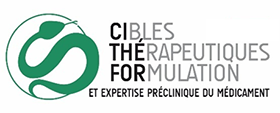Céline Delaitre soutiendra sa thèse de doctorat intitulée "Caractérisation pharmacologique et fonctionnelle de ligands traceurs du récepteur AT1 de l’angiotensine II pour l’étude de nouvelles approches thérapeutiques" le mercredi 22 novembre à 14h, amphi Gallé de la présidence-Brabois.
Le jury est composé de :
- Directeur de thèse : Mr François DUPUIS MCU, Université de Lorraine, EA 3452 CITHEFOR, Nancy, France
- Co-directeur de thèse : Mme Sandra LECAT CR, Université de Strasbourg, BSC UMR 7242, CNRS, Illkirch, France
- Rapporteur : Mme Céline DEMOUGEOT PR, Université de Bourgogne Franche-Comté, EA 4267 PEPITE, Besançon, France
- Rapporteur : Mr Nicolas GILLES DR, Université Paris-Saclay, CEA, DMTS, SIMoS, Gif-sur-Yvette, France
- Examinateur : Mme Karen MARTINEZ Associate Professor, Université de Copenhague, Department of Chemistry and nano-Science Center, Frederiksberg, Denmark
- Examinateur : Mr Daniel HENRION DR, INSERM 1083, UMR 6015, CNRS, Université d’Angers, Angers, France


